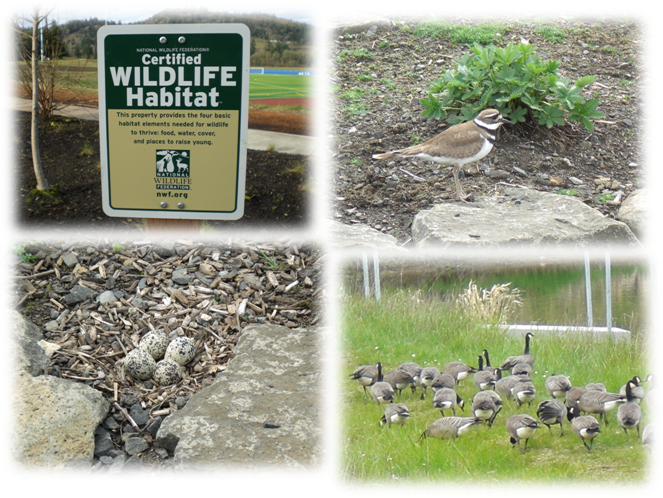Sustainable Practices - Departments
January 2013 Featured Deparment: Facilities Management and Planning
FMP Main | Custodial Services | Grounds | Planning | Trades | Transportation
Grounds

Much of Lane's grounds are National Wildlife Federation Certified Wildlife Habitat. In order to get this certification, a property needs to have four basic habitat elements: food, water, cover, and places to raise young.
Weed control is maintained by hand removal, spot burning, and with plantings.
Lane's gardens are self-sustaining. They require very little water once established and do not require fertilization. This strategy relies on leaving the majority of leaf litter in place to decompose and provide self-fertilization.
Landscapes are chemical-free and maintained and pruned to ensure plant health and natural development.
Lane's gardens use a minimum of 60% native plant material. Non-native plants may be included if they provide a benefit for wildlife and are not invasive. In the last ten years, 450 trees have been planted at Lane.

Grasses and meadows are maintained by mulch mowing. Meadows are mowed infrequently and allowed to grow to a height that enables wildflowers to bloom and propagate.
When you're not landscaping with native trees, bushes, grasses, and flowers, why not landscape with edible plants that are used in Lane's conference center and campus restaurant? That's what Lane's Grounds Crew does!

